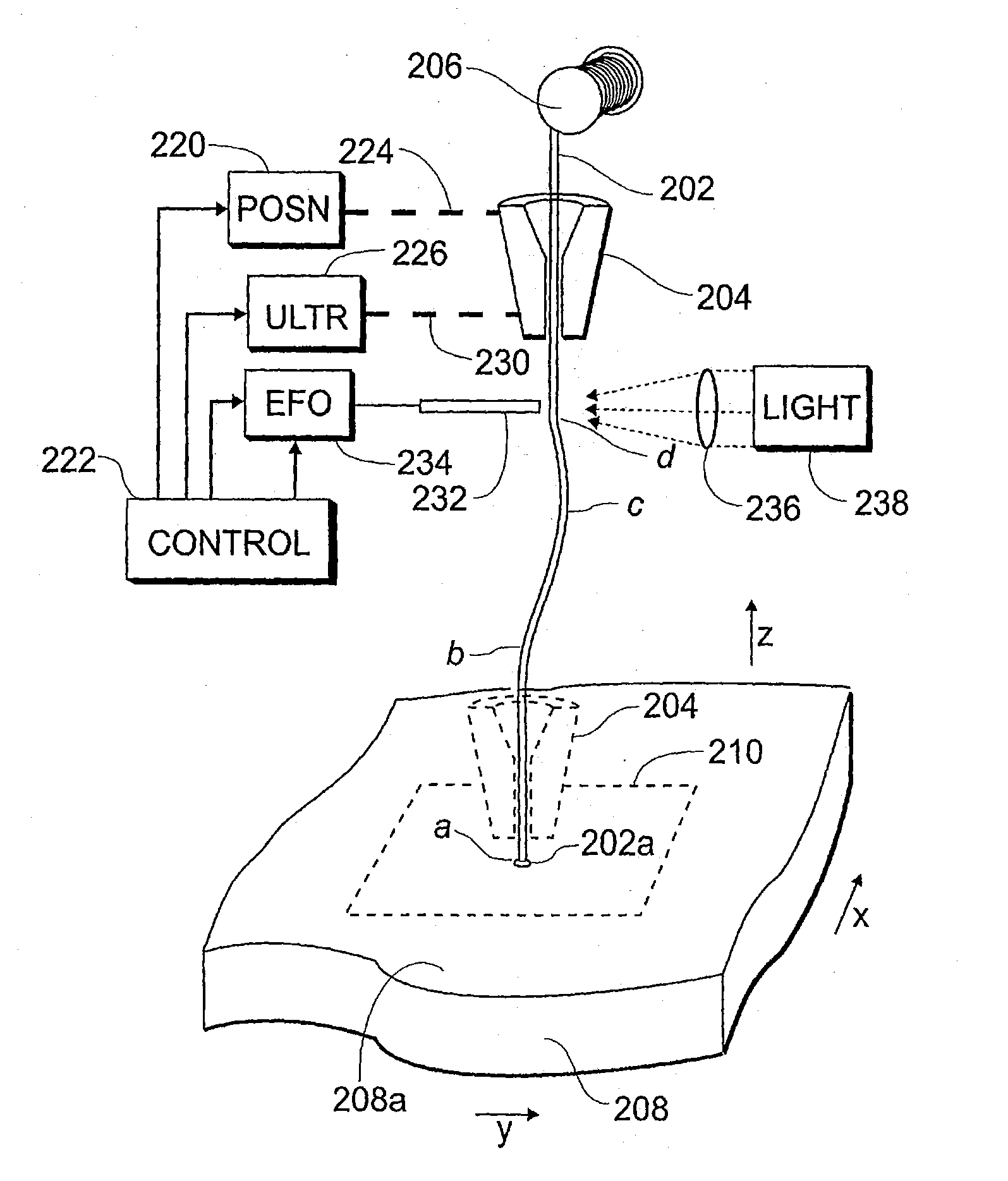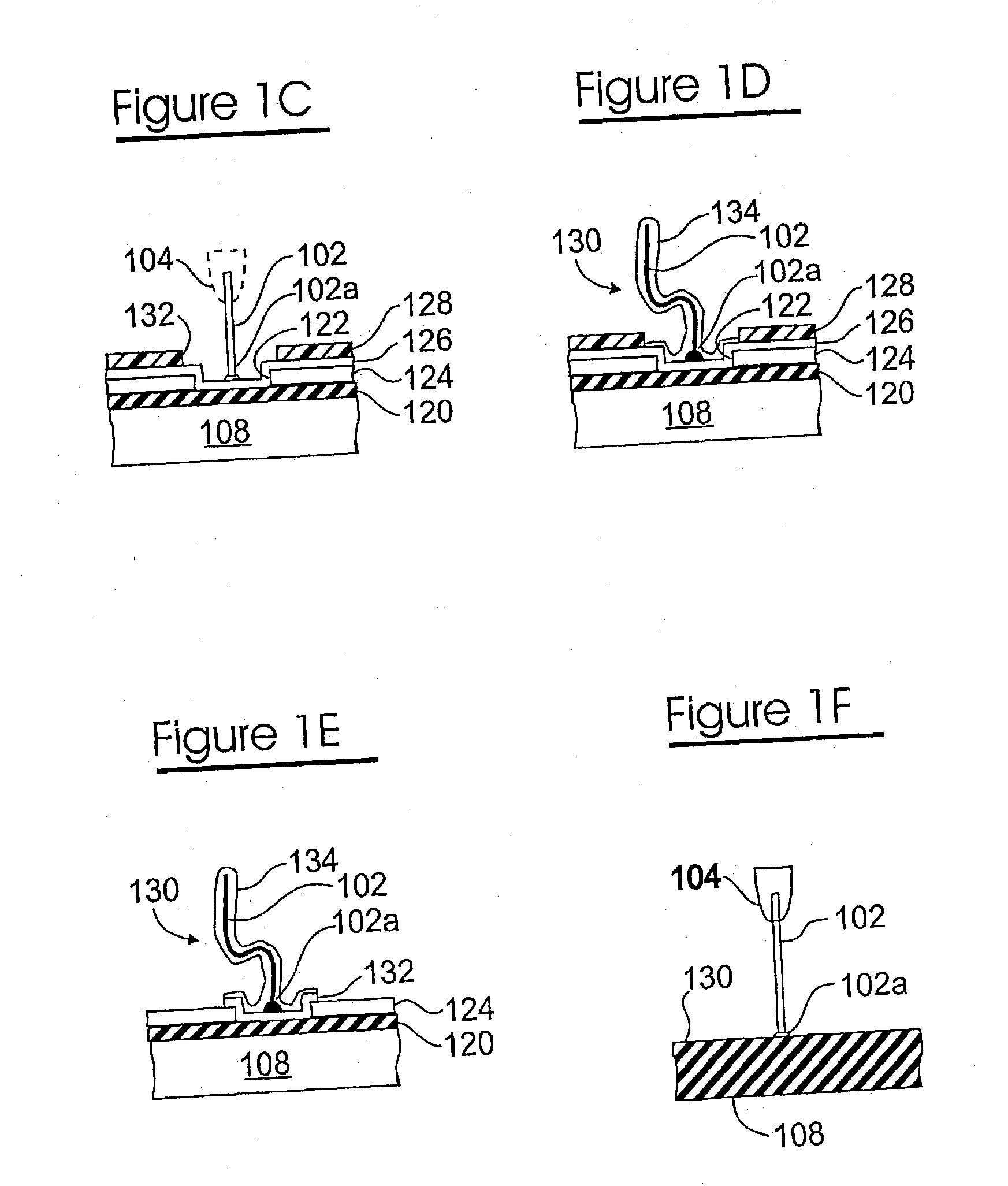Method Of Wirebonding That Utilizes A Gas Flow Within A Capillary From Which A Wire Is Played Out
a gas flow and capillary technology, applied in the direction of printed circuit structure association, printed circuit assembling, printed element electric connection formation, etc., can solve the problems of mechanical stress, inherent limitations of each of the aforementioned techniques, and achieve the effect of improving the severing of the bond wir
- Summary
- Abstract
- Description
- Claims
- Application Information
AI Technical Summary
Benefits of technology
Problems solved by technology
Method used
Image
Examples
case-1
[0220] CASE-1 discloses mounting the resilient contact structures to a variety of electronic components, including:
[0221] (a) ceramic and plastic semiconductor packages;
[0222] (b) laminated printed circuit boards (PCBs), Teflon™ based circuit boards, multi-layer ceramic substrates, silicon-based substrates, varieties of hybrid substrates, and other substrates for integration of electronic systems known to those skilled in the art.
[0223] (c) semiconductor devices, such as silicon and gallium arsenide devices; and
[0224] (d) passive devices, such as resistors and capacitors.
[0225] CASE-1 discloses the following wire materials and dimensions:
[0226] (a) gold, aluminum or copper, alloyed (or doped) with beryllium, cadmium, silicon or magnesium;
[0227] (b) solder, specifically lead-tin solder wire;
[0228] (c) alloys of silver and platinum; and
[0229] (d) diameters ranging between 0.0005 and 0.0050 inches.
[0230] CASE-1 discloses employing the following wirebonders and techniques:
[023...
case-2
[0278] CASE-2 discloses a number of specific uses for resilient contact structures are described, including a variety of interposer embodiments, wherein:
[0279] (a) a resilient contact structure is mounted to one side of an interposer substrate at a plated through hole, and a resilient contact structure is mounted to another, opposite side of the interposer substrate at the plated through hole;
[0280] (b) a resilient contact structure is mounted to one side of an interposer substrate at a plated through hole, and looped contact structure is mounted to another, opposite side of the interposer substrate at the plated through hole;
[0281] (c) a resilient contact structure having a portion extends from a plated through hole up from one side of the interposer substrate, and having another portion which extends through the through hole to beneath the interposer substrate;
[0282] (d) a molded plastic interposer substrate is provided with one set of holes extending into the substrate from on...
embodiment 900
[0609]FIG. 9A illustrates an embodiment 900 of the use of a sacrificial member 902 (shown in dashed lines) in conjunction with forming a resilient contact structure 930 suitable for use as a probe. In this example, the sacrificial member is suitably formed of aluminum.
[0610] A plurality (one of many shown) of depressions 904 are formed, such as by etching, engraving, stamping, or the like, in the top surface 902a of the sacrificial member 902. The bottom (as viewed) surface of the depression 904 has an irregular topography, such as in the form of inverted pyramids ending in apexes. A thin layer 906 of a conductive material, such as gold or rhodium (alternatively, tin or solder, such as when contacting solder terminals) is deposited in the depression, in any known manner. The depression 904 is then substantially filled with a conductive material 908 such as nickel, in any known manner. A layer 910 of a conductive material such as gold is then deposited over the filler material 908, i...
PUM
| Property | Measurement | Unit |
|---|---|---|
| Flow rate | aaaaa | aaaaa |
| Shape | aaaaa | aaaaa |
Abstract
Description
Claims
Application Information
 Login to View More
Login to View More - R&D
- Intellectual Property
- Life Sciences
- Materials
- Tech Scout
- Unparalleled Data Quality
- Higher Quality Content
- 60% Fewer Hallucinations
Browse by: Latest US Patents, China's latest patents, Technical Efficacy Thesaurus, Application Domain, Technology Topic, Popular Technical Reports.
© 2025 PatSnap. All rights reserved.Legal|Privacy policy|Modern Slavery Act Transparency Statement|Sitemap|About US| Contact US: help@patsnap.com



